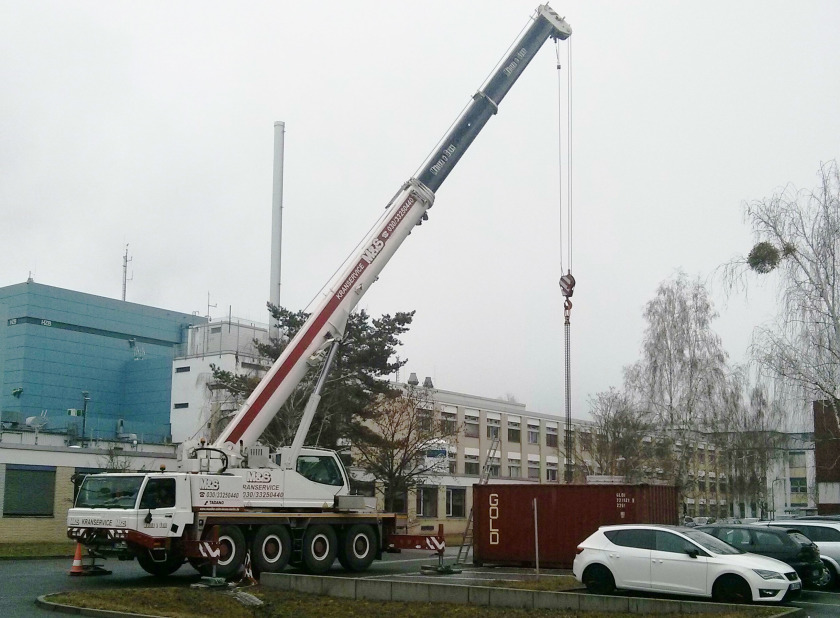The BioRef neutron instrument to be set up again at ANSTO in Australia

BioRef was transported from HZB on December 19, 2016 and shipped to Australia. The trip will take about two months. © D. Höcker/HZB
The BioRef neutron instrument commenced its roughly two-month journey from HZB to Australia on December 19, 2016. It will be set up again at the OPAL neutron source there, part of the Australian Nuclear Science and Technology Organisation (ANSTO) in Sydney. It is expected to be available to the international scientific community beginning in 2018 under the name "Spatz".
ANSTO operates the OPAL neutron source as part of the Centre for Neutron Scattering in the Lucas Heights quarter of Sydney. OPAL is one of the newest and most successful neutron sources in the world and ANSTO is planning further expansion of the neutron source and neutron research.
There has been close cooperation with the HZB for several years, in particular in research on energy materials. The two institutions entered into a new agreement in October 2016 to intensify this cooperation. Among other aspects, they will strive for an active exchange of ANSTO and HZB scientists, and they intend to cooperate more closely in the area of support for junior scientists as well. ANSTO is taking over the BioRef reflectometer, which facilitates research on soft matter, solid/liquid interfaces, and thin films, from the BER II neutron source in Berlin that will close at the end of 2019.
BioRef was packed up in December and shipped to Australia. It will be set up anew at ANSTO and commissioned in 2017. It will then become available for research again beginning in 2018 under the name “Spatz”, a reference to its German origins. Instrument time will be explicitly reserved there for the German user group.
In order to ensure the transfer of knowledge to the neutron community and the continued use of neutron instruments, HZB is also working on cooperative agreements with other research institutions in Europe and the world.
red.
https://www.helmholtz-berlin.de/pubbin/news_seite?nid=14596;sprache=en
- Copy link
-
The twisted nanotubes that tell a story
In collaboration with scientists in Germany, EPFL researchers have demonstrated that the spiral geometry of tiny, twisted magnetic tubes can be leveraged to transmit data based on quasiparticles called magnons, rather than electrons.
-
Bright prospects for tin perovskite solar cells
Perovskite solar cells are widely regarded as the next generation photovoltaic technology. However, they are not yet stable enough in the long term for widespread commercial use. One reason for this is migrating ions, which cause degradation of the semiconducting material over time. A team from HZB and the University of Potsdam has now investigated the ion density in four different, widely used perovskite compounds and discovered significant differences. Tin perovskite semiconductors produced with an alternative solvent had a particular low ion density — only one tenth that of lead perovskite semiconductors. This suggests that tin-based perovskites could be used to make solar cells that are not only really environmentally friendly but also very stable.
-
Synchrotron radiation sources: toolboxes for quantum technologies
Synchrotron radiation sources generate highly brilliant light pulses, ranging from infrared to hard X-rays, which can be used to gain deep insights into complex materials. An international team has now published an overview on synchrotron methods for the further development of quantum materials and technologies in the journal Advanced Functional Materials: Using concrete examples, they show how these unique tools can help to unlock the potential of quantum technologies such as quantum computing, overcome production barriers and pave the way for future breakthroughs.
